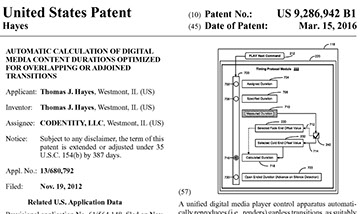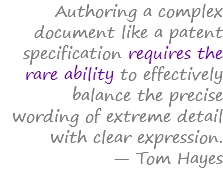Technical Writer
Technical writing requires a special discipline. The writer must be able to fuse his or her methodical capabilities with a sense of artistry. Authoring technical documentation like that needed for patent specifications or software help files requires the ability to produce material that is grounded in attention to detail; yet expressed in a way that is clear and easy for the non-technical reader to understand.
Example by Author-Inventor Hayes
Reproduced below is the 134 word ABSTRACT from a United States patent: US 9286942 authored by the inventor Thomas J. Hayes. IMPORTANT: With the exception of the patent's CLAIMS section, the entire specification was written by inventor Thomas J. Hayes. The DRAWINGS were also designed and crafted by inventor Hayes using patent office drafting guidelines.
About a patent Abstract
According to the USPTO (United States Patent and Trademark Office) the abstract must consist of a summary of the disclosure as contained in the description, the claims and any drawings.
The abstract must be as concise as the disclosure permits (preferably 50 to 150 words if it is in English or when translated into English).
The abstract should be primarily related to what is new in the art to which the invention pertains.
ABSTRACT (As published in US 9286942)
A unified digital media player control apparatus automatically reproduces (i.e., renders) gapless transitions, as suitably adjoined or concurrently-overlapping events, between a discrete first media file (e.g., sound recording) and a discrete second media file.
One embodiment is implemented on a computing device with a graphical user interface and access to a library of digital media files. Logic can distinguish between the production sound design of recordings which have a desirable “creative content” duration (i.e., interval) that will resolve either abruptly or with a gradual fade.
Responsive to media file content assessments, and without operator actions or media file preparation, the invention can use at least one programmatically-addressable event timer object to robotically assign discrete player reproduction timing instructions enabled to cause the system's associated media player objects to consistently interoperate with natural, optimally-timed transitions.
With one exception, each section of the awarded patent was written by inventor Thomas J. Hayes. The CLAIMS section was drafted by the patent attorney of record who was working in collaboration with the inventor.
READ the full published patent here.
A mobile device may not offer the most suitable screen resolution for reading the published patent.
©2023 Thomas J. Hayes — All rights reserved


